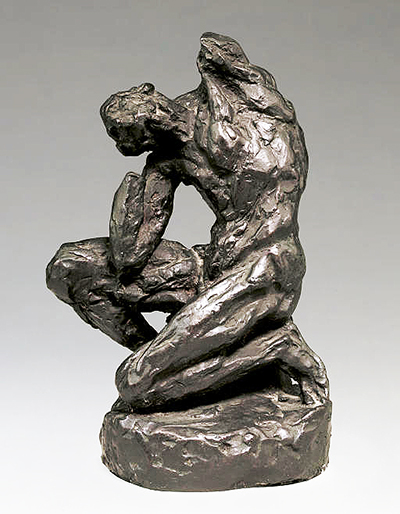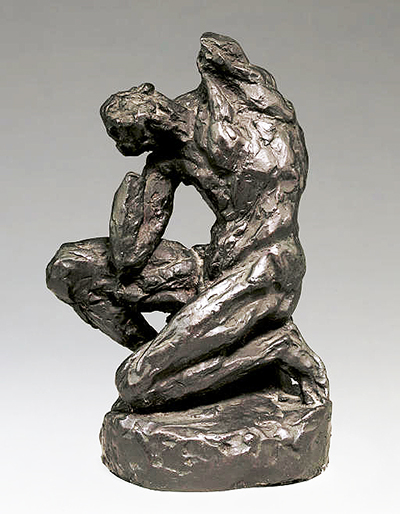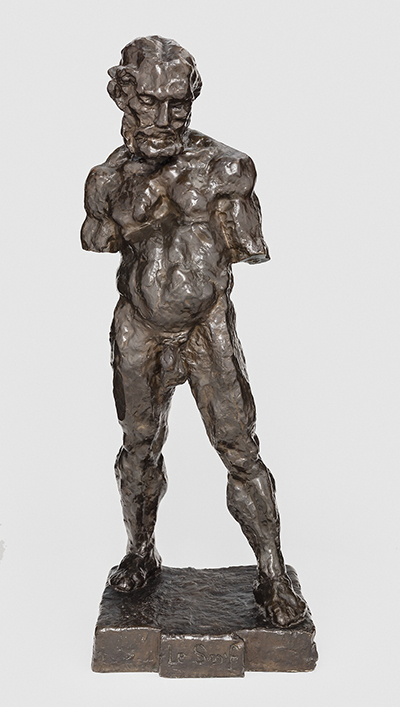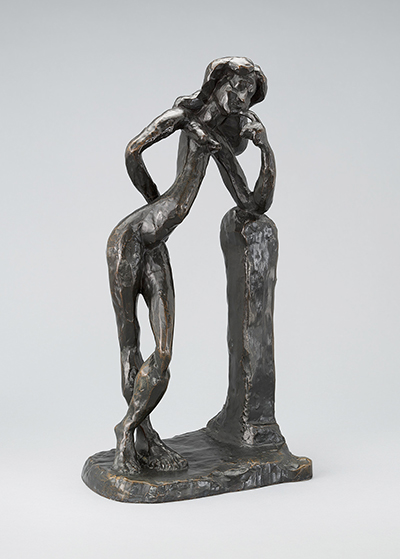The artist would not throw himself seriously into sculpture into the start of the 20th century, by which time he was already into his thirties. He would go onto produce sixty-nine bronzes and one other carved from wood, though others may have existed.
It was not until 1912 that the first major display of his sculptures in public would be arranged, with the 1950s later offering a more indepth and comprehensive survey of his work in this medium within a number of different galleries in Europe and the US. Having rejected the academic teachings of Bouguereau earlier in his career, prefering a less rigid approach to learning, he was always someone who would forge his own path in life. Matisse's sculptures would become much more than a simple side interest, but a genuine, respected strand to his oeuvre that continues to be researched and documented today. Some of the content in this article, for example, comes from a publication from The Metropolitan Museum of Art in 1972, titled The sculpture of Matisse by Alicia Legg. That provides the most impressive survey of his work in wood and bronze that we have found yet.
At around the end of the 19th century, Matisse would seek out new, more free avenues of inspiration and chose to visit the Louvre on many occasions, making drawings of the various items to be found within its huge collection. He would attempt to fill his interest in sculpture with evening sessions at the Ecole de la Ville de Paris, but could not seem to impress them at the time. He would then collaborate with Antoine Bourdelle at the studios of La Grande Chaumiere for a period of time, hoping to learn from a young man who at the time was considered to be the most talented student working under the guidance of Auguste Rodin.
Matisse and Rodin knew each other by now, but this young man had been unable to excite the master by this stage. Despite that, the influence of Rodin can be seen in Matisse's sculptures, certainly, and he also drew on ideas from another notable artist, Antoine-Louis Barye. The photograph included in this page captures L'écorché, d'après Puget, a creation which bears clear similarities with the work of Rodin, perhaps specifically the likes of The Falling Man and The Thinker.
In the very early 20th century Matisse would spend considerable amounts of time on each of his sculptures. One took as long as two years, due to his desire to study the subject in detail prior to working on each element of it. This ensured accuracy but also saved time later on in his career, because much of this learning was now committed to memory. Often the hard work needs to be put in at the start before any artist can truly work with freedom. The copy of Barye's Jaguar Devouring a Hare was finished in 1901 and involved a careful study of this beautiful creature, a little similar to how Eugene Delacroix had famously studied lions and tigers within French zoo's inorder to achieve as accurate a depiction as possible. He would also produce a copy of Puget's Ecorche in (1903) which was a common trend within French art as a means to displaying and learning the human anatomy, by revealing layers below the skin. Speaking of Delacroix, he would use this theme to develop his talents as a draughtsman, in a similar way to other French Romancists, including Theodore Gericault and also earlier Neo-Classicist painters such as Ingres and David.
A further example of the precision and attention to detail used by Matisse in his sculptures at this stage would be how he required a model to sit around one hundred times for a single piece. Bevilaqua, who himself had earlier appeared in Rodin's Walking Man of 1877, would become the subject of Serf, which recognised her older age by the time this piece came about some twenty five years later. Despite the long period taken to produce Serf, it was generally well accepted and considered to be an impressively expressive statue. Whilst not working spontaneously at this stage, perhaps because he was still learning the techniques of this discipline as he created each piece, he was still able to formulate consistent, fluid pieces which offered promise for him in sculpture, though with still much more to learn at this stage. It also seemed that connections between his work and this of Rodin would always be there, whatever went on in their own relationship. As perhaps the greatest name in French sculpture, Rodin would always be in high demand for his services as a tutor and therefore could not offer as much time as he might have liked to each and every student that came through his door.
At around the same time as The Serf, there were also several female portraits as well, such as Madeleine, I (1901), II (1903) aand Seated Nude with Arms on Head (1904). He was starting to celebrate the beauty of the female figure within three dimensions for the first time, having previously focused on it many times in his paintings and drawings. He would several different women to pose for his paintings, allowing him to experiment with clothing, jewellery and makeup within his bright colour schemes but the opportunity to produce tactile, physical depictions of these women would prove to tempting an option to ignore. Across these different sculptures he would also experiment with different styles of surface, some rougher than others. It would then be around 1904-1906 that some of the poses within his paintings would then serve as standard approaches for his sculptures as the two art disciplines started to help developments in each.
By 1906 sculpture would be the major focus of the artist, producing a large number of statues in that year. He would generally work in pencil or charcoal first, drawing out the key forms prior to beginning the work itself. Many of these study drawings remain today and offer an important insight into the working practices of this artist. He would not normally go into too much detail within his sketches, just choosing to roughly put out ideas and then review them. It would mainly be the outline of the body that concerned him, with little interest in facial or torso features. He was happy to worry about them later once the sculptured work had begun. His reclining poses would require particular attention in the earlier stages as any mistakes would be particularly difficult to then correct later on, once the main core of the piece had been completed, in a similar way to how an oil painting, with its many layers and inter-linked content, is often much more tricky to adjust than a simple charcoal sketch, which can even be re-done from scratch in just a few minutes.
There have been many famous artists in recent centuries who have specialised in painting but who have successfully made the transition into sculpture. Despite the clear technical challenges which are present in this discipline, it has offered enough opportunities for creativity to draw in all manner of famous names. Within that there has also been enough variations in style available to allow these figures to impress their own individuality onto this part of their oeuvre. For example, several of them would be inspired by traditional African art, with good examples coming from these Modigliani and Picasso sculptures. You will then see how someone like Miro can take the visual language created in his paintings and carry it across into sculpture. He adored the opportunity of bringing his ideas over into the third dimension, whilst others have enjoyed the tactile nature of this art form. Many would also have come across earlier forms of sculpture during their studies as well as from their own interest in art history, with this medium being particularly prominent during the Italian Renaissance.
Classical sculpture from Italy would bring about a whole new period for this art form, with Michelangelo leading the way with famous contributions that remain amongst the most recognisable items in all art history. Even though painting continues to dominate the public's interest, there is an acceptance of this master's genius across a variety of different disciplines, with his two highlights being generally considered as David and The Creation of Adam. He would become one of the three main masters of the Italian Renaissance, with Raphael and Da Vinci being far better known for painting and drawing. Perhaps his biggest challenges within sculpture would therefore actually not be these two, but instead would be Gian Lorenzo Bernini and Donatello, who likely would have also come to the attention of Matisse when he was first studying and practicing the techniques of this ancient art form. Aside from them, many also remember fondly the sculptured doors produced by Lorenzo Ghiberti in Florence, though a deeper search of this period of art history will reveal countless other significant names across the different regions of the fragmented Italian nation during this fruitful and influential period.







